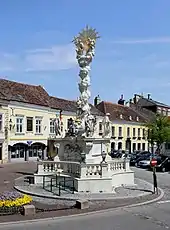Mödling
Mödling is the capital of the Austrian district of the same name located approximately 14 km south of Vienna.
Mödling | |
|---|---|
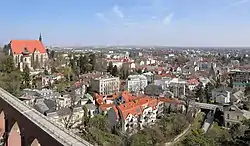 Mödling | |
 Coat of arms | |
 Mödling Location within Austria | |
| Coordinates: 48°5′N 16°16′E | |
| Country | Austria |
| State | Lower Austria |
| District | Mödling |
| Government | |
| • Mayor | Hans Stefan Hintner (ÖVP) |
| Area | |
| • Total | 10.04 km2 (3.88 sq mi) |
| Elevation | 246 m (807 ft) |
| Population (2018-01-01)[2] | |
| • Total | 20,555 |
| • Density | 2,000/km2 (5,300/sq mi) |
| Time zone | UTC+1 (CET) |
| • Summer (DST) | UTC+2 (CEST) |
| Postal code | 2340, 2342 |
| Area code | 02236 |
| Website | www.moedling.at |
Mödling lies in Lower Austria's industrial zone. The Mödlingbach, a brook which rises in the Vienna Woods, flows through the town. Near Achau it joins with the Schwechat. Woodland occupies a large part of the municipality, part of the Föhrenberge ('Pine Mountains').
Located immediately south of Vienna, and within the boundaries of the district of Mödling, is one of the largest shopping centres in Europe: Shopping City Süd (SCS).
Geography
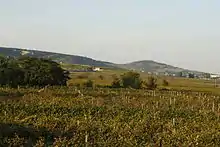
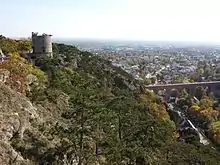
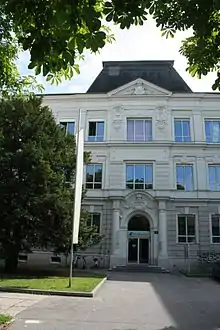
Grapes are grown on the slopes of the Wienerwald; the area is called Thermenregion, where one can find much Heurigen (the most recent year's wine).
Wiener Neudorf to the east, and Maria Enzersdorf to the north, merge directly into Mödling. South of Mödling is Gumpoldskirchen, separated by the Eichkogel with its very special flora. In the west a narrow street runs through Vorderbrühl, formally a village in its own rights, and leads to Hinterbrühl. This narrow valley is called Klausen, above it the remains of the Mödling castle, once belonging to the Babenberger, the then ruling family. On the other side of the Klausen is the Kalenderberg, with the castle of Liechtenstein on its far side. The beginning of the Klausen is marked by the large red-brick aqueduct of the Erste Wiener Hochquellenwasserleitung. The steep, rocky valley sides of the Naturpark Föhrenberge grow the typical Wienerwald-Schwarzföhren (the austriaca form of the European Black Pine, Pinus nigra).
History

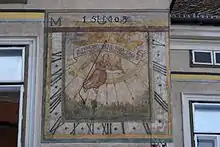
The settlement dates back to the Neolithic era. Through the centuries, the name of the town evolved from Medilihha to Medelikch, Medling and, finally, Mödling. These names traces back to old Slavic meaning 'slowly running water'. Today there is a quaint old town with a pedestrian area. The town was the residence of a branch of the Babenberg family, as a result of which it received the nickname Babenbergerstadt ('Town of the Babenbergs').
Traces of the first settlements of the Hallstatt culture from the Neolithic era were found on the Kalenderberg. Roman coins and a Roman burial site have been found near today's railway station.
After Charlemagne's victory in 803 AD against the Avars, the area around Mödling was settled by settlers from Bavaria. About 500 Avar graves were found in the area of the "Goldene Stiege" (very close to today's old city).
The first ancient document mentioning "MEDILIHHA ULTRA MONTEM COMMIGENIUM" is dated 8 September 903, when two bishops (of the then Roman Catholic church) exchanged lands. However, in 907 the settlement seems to have been destroyed again. After the Battle of Lechfeld settlement in the area of today's Mödling started again.
After this, for some time Mödling housed a relative of the then ruling House of Babenberg. In 1177, Henry the Elder, son of Henry II Jasomirgott, became landlord in an area reaching from Liesing to Piesting and Bruck an der Leitha. You can read this in old documents kept in the nearby monastery of Heiligenkreuz. In Henry's days arts and culture dominated in the castle of Mödling; the famous minnesinger Walther von der Vogelweide stayed there more than once. The Spitalkirche and today's St. Othmar were built in the 15th century, the Karner (charnel house) in the 12th.
Even in these times, Mödling grew grapes; after Langenlois, it was the largest grape-growing community in Lower Austria.
In 1343, Duke Albrecht II granted the rights of a market town to Mödling.
In 1529, the Ottomans devastated Mödling for the first time during their first siege of Vienna. In 1679, many citizens died of the Black Death. When the Ottomans came again in 1683, almost all the citizens of Mödling were killed. The second epidemic of the Black Death only brought death to 22 inhabitants, hence the survivors built the monument of the Holy Trinity (Dreifaltigkeits- or Pestsäule) at the Freiheitsplatz.
In the early 19th century, Ludwig van Beethoven often visited his favorite pub, the Three Ravens, in Mödling.
Arnold Schönberg lived in Mödling between 1918 and 1925, and invented his twelve-tone technique of composition there.
On 18 November 1875, Mödling was designated a city.
From 1883 to 1932, Mödling was the starting point of the Mödling and Hinterbrühl Tram, Austria's first electric railway and world's first long-lasting tram with overhead lines. In 1938, after the Anschluss with Nazi Germany, Mödling was incorporated into the newly formed 24th District of Vienna. In 1954, it became once again a part of Lower Austria.
Population
|
|
Politics
| Wahl | ÖVP | Grüne | SPÖ | NEOS/LIF | FPÖ | WIR | BMK | WfM | M 2000 |
|---|---|---|---|---|---|---|---|---|---|
| 1990 | 17 | 1 | 11 | 2 | 10 | ||||
| 1995 | 16 | 2 | 8 | 4 | 4 | 7 | |||
| 2000 | 15 | 5 | 10 | 1 | 4 | 5 | 1 | ||
| 2005 | 18 | 7 | 12 | 2 | 2 | ||||
| 2010 | 19 | 8 | 9 | 3 | 1 | 1 | |||
| 2015 | 18 | 10 | 8 | 4 | 1 | ||||
| 2020 | 16 | 11 | 8 | 3 | 2 | 1 |
| Wahl | ÖVP | Grüne | SPÖ | NEOS/LIF | FPÖ | WIR | BMK | WfM | M 2000 |
|---|---|---|---|---|---|---|---|---|---|
| 2015[3] | 6 | 3 | 2 | 1 | |||||
| 2020 | 6 | 4 | 3 | 1 |
- 1 2020 as NEOS, formerly LIF
- 2 Wir für Mödling – Eva Maier
- 3 Bürgerliste Michael Kanyka}}
- 4 Wir für Mödling, formerly Liste Pepi Wagner
- 5 Mödling 2000
- 6 The size of regional council is 41.
- 7 The size of city government could vary between 9 and 14.
Members of the city-government (2016[4])
| Name | Political Party | Job |
|---|---|---|
| Hans Stefan Hintner | ÖVP | major |
| Gerhard Wannenmacher | Die Grünen – Die Grüne Alternative | second major, traffic, pollution, IKT |
| Ferdinand Rubel | ÖVP | third major, finances, pool |
| Ulrike Binder | Die Grünen – Die Grüne Alternative | Example |
| Daniel Könczöl | FPÖ | Example |
| Leopold Lindebner | ÖVP | Example |
| Pobert Mayer | ÖVP | Example |
| Franziska Olischer | ÖVP | Example |
| Friedrich Panny | SPÖ | Example |
| Rainer Praschak | Die Grünen – Die Grüne Alternative | Example |
| Gerald Ukmer | Example | Example |
| Karin Wessely | SPÖ | Example |
| Roswitha Zieger | ÖVP | Example |
Traffic

Mödling functions as a traffic hub for its direct vicinity. Bus lines connect the town and Südbahn with the surrounding areas. The Südbahn connects Mödling to Vienna, but also to other local centers like Wiener Neustadt by commuter trains.
Many bus lines end/start at Mödling's railway station: Most of them lead to Vienna (with different ways) (207, 259, 260, 265, 266, 269, 270...) but also other villages in the district are destinations: Gießhübel (262), Hinterbrühl, Gaaden... (364, 365), Guntramsdorf (363) and many more.
The closest airport is Vienna International Airport.
The town lies close to several major motorways (A2, A23, S1).
Until the 1960s, the town was connected to the tram system of Vienna though the line 360 was discontinued after the commuter train system was introduced on the Südbahn. Historically Mödling was the site of the first electrified tram line, which had mainly touristic use.
Economy
In the old days, because of the rail-connection to the north/Vienna and to the south, several large industries had their plants here. Today most of the firms are SMEs. The larger ones have moved to Wiener Neudorf into the 'Industriezentrum Niederösterreich Süd'.
Castles
The Mödling area in the Vienna Forest contains many old castles (German: Burgen) and ruins. Castle Liechtenstein is the most famous and biggest castle. It was owned by the wealthy family who later founded the country of the same name. Burgruine Mödling also stands nearby and is one of the oldest ruins in the area. It dates back to the 11th century. In addition, Black Tower (Schwarzer Turm) looks out over downtown Mödling from the Calendar mountains. It was built over 200 years ago, but is still privately occupied to this day. Lastly, on the walk between Black Tower and Castle Liechtenstein, one will come across a 200-year-old amphitheatre nearly buried in the woods. It was built in the same time frame as the Black Tower and served as an important cultural centre for the local Mödling population.
Culture and sights
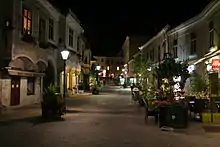
.JPG.webp)
The well-preserved and revitalized Old City is protected by the Hague Convention. The town hall holds the registry office. Because of its lovely environment many couples choose to marry here. Schrannenplatz and Kaiserin-Elisabeth-Strasse were pedestrianised at the very early date of 1976, the first time a 'Bundesstraße' had been declared a pedestrian area.
Nearby is the Eichkogel Nature Reserve, with rare flora, like 'Knollen-Brandkraut' (Phlomoides tuberosa) and others, on 'Halbtrockenrasen'. Among the rocks in the Klausen rare plants grow, like the 'Mödlinger Federnelke' (Dianthus plumarius subsp. neilreichii), which was discovered as late as the middle of the 19th century by the botanist August Neilreich, or the 'Deutsche Alant' (Inula germanica).
Buildings
- St. Othmar church and charnel
- Spitalkirche
- Ruins of the Mödling castle
- Husarentempel on the top of the 'Kleine Anninger'
- Schwarzer Turm
- Amphitheater
Museums
- Museum Mödling
- Volkskundemuseum
- Stadtverkehrsmuseum
- Essinger-Haus (where a famous painter used to live)
- Beethoven-Gedenkstätte
- Schönberg-Haus
Theatres
- Stadttheater
- Bühne Mayer
- Mödlinger Puppenkiste (MÖP)
- Theater im Bunker (in a former air-raid shelter in Vorderbrühl)
- Komödienspiele (summer plays in the Stadttheater)
Schools
- Elementary and secondary schools
- Bundesgymnasium und Bundesrealgymnasium Franz-Keim-Gasse
- Bundesgymnasium und wirtschaftskundliches Bundesrealgymnasium Untere Bachgasse
- Höhere Technische Bundeslehr- und Versuchsanstalt
- Vienna Business School Mödling, Handelsakademie der Wiener Kaufmannschaft
- Höhere Lehranstalt für Mode & Bekleidungstechnik oder Produktmanagement & Präsentation
- Beethoven Musikschule
- Chorschule der Sängerknaben vom Wienerwald
- Volkshochschule
- Polytechnische Schule
Institutions
- Bezirkshauptmannschaft
- Finanzamt
- Bezirksgericht
- Veteranärmedizinisches Institut, which has importance beyond the area of Mödling
Notable citizens
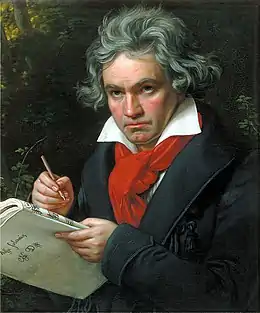
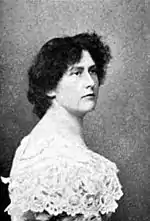
- Ludwig van Beethoven, (1770-1827), composer, lived here in his later years
- Albert Drach, (1902-1995), writer and lawyer
- Martin Gusinde, (1886-1969), priest and ethnologist
- Paul Harather, (born 1965), director, producer, author
- Manfred Hemm, (born 1961), opera singer
- Alfred Maleta, politician, president of the Austrian Parliament ('House of Commons')
- (Blessed) Maria Restituta, (1894-1943), nun and nurse
- Jan Romer, (1869-1934), Polish general, studied here
- Josef Schöffel, mayor, 'Retter des Wienerwaldes'
- Arnold Schönberg, (1874-1951), painter and composer, lived here
- Anton Wildgans, poet
- Anton Webern, (1883-1945), composer and conductor, had a studio in Mödling
- Martin Bauer, Austrian motorcycle racer, 3-Time IDM Superbike Champion, also he raced in MotoGP and the Superbike World Championship.
- Maria Janitschek (1859-1927), writer
- Robert Müller (1877-1942), film manager, distributor of films and producer
- Otto Brunner (1898-1982), historian
- Peter Weiser (1926-2012), journalist and secretary general of the Vienna Konzerthaus
- Franz Koglmann (born 1947), jazz musician
- Herbert Kaufmann (born 1949), politician (SPÖ) and member of the Management Board of Flughafen Wien AG
- Bruno Liberda (born 1953), composer
- Dieter Chmelar (born 1957), journalist, presenter and comedian
- Michael Spindelegger (born 1959), politician (ÖVP)
- Gery Keszler (born 1963), founder and organizer of the Life Ball s
- Manfred Zsak (born 1964), football legend
- Ernst Aigner (born 1966), football player
- Rupert Huber (born 1967), composer and pianist
- Michael Buchleitner (born 1969), obstacles and long distance runner
- Karin Gayer (born 1969), writer
- Stephan Marasek (born 1970), football legend
- Marion Maruska (born 1972), tennis player
- Thomas Aigner (born 1973), historian
- Markus Scharrer (born 1974), football player
- Christine Reiler (born 1982), Miss Austria 2007
- Lisa Makas (born 1992), football player
International relations
Twin towns — Sister cities
 Esch-sur-Alzette, Luxembourg
Esch-sur-Alzette, Luxembourg Velletri, Italy
Velletri, Italy Zemun, Serbia
Zemun, Serbia Offenbach am Main, Germany
Offenbach am Main, Germany Puteaux, France[6]
Puteaux, France[6] Köszeg, Hungary
Köszeg, Hungary Vsetín, Czech Republic
Vsetín, Czech Republic.svg.png.webp) Saint-Gilles, Belgium
Saint-Gilles, Belgium.svg.png.webp) Zottegem, Belgium
Zottegem, Belgium
References
- "Dauersiedlungsraum der Gemeinden Politischen Bezirke und Bundesländer - Gebietsstand 1.1.2018". Statistics Austria. Retrieved 10 March 2019.
- "Einwohnerzahl 1.1.2018 nach Gemeinden mit Status, Gebietsstand 1.1.2018". Statistics Austria. Retrieved 9 March 2019.
- "Neuer Gemeinderat konstituiert" (in German). Stadtgemeinde Mödling. 2015-03-03.
- http://www.moedling.at/Stadtgemeinde_Servicestelle/Politik/Gemeinderat
- Große Linksammlung und Download hilfreicher Programme
- "Puteaux - Qu'est-ce que le jumelage?". Mairie de Puteaux [Puteaux Official Website] (in French). Archived from the original on 2013-11-26. Retrieved 2013-12-28.
External links
| Wikimedia Commons has media related to Mödling. |
| Wikivoyage has a travel guide for Mödling. |
| Wikisource has the text of the 1905 New International Encyclopedia article "Mödling". |
- (in German) Official site of Mödling
- (in German) Online map of Mödling
- (in German) Online Scouts of Mödling
- (in German) Mödling attractions
- (in German) History
- (in German) Statistics
- (in German) Museum Mödling
- (in German) Mödling and surrounding in old picture postcards
- (in German) detto
- . Encyclopædia Britannica (11th ed.). 1911.
